Tomato variety Sanka - variety features and tips for growing
Tomato is a vegetable that is always present on our table. Tomatoes consumed fresh, canned, they are an integral part of many sauces, dressings for various dishes and ketchup. And, of course, tomatoes grown on their own plot are much tastier and healthier than purchased ones with their own hands. Among gardeners, the Sanka tomato variety is gaining more and more popularity.
Content:
Features and benefits of the variety
The full name of the variety is "Tomato Aelita Sanka". Tomato Sanka is one of the earliest ripening varieties: the ripening time of the crop is 65-85 days. Tomato Sanka is a herbaceous plant with a height of about 50 - 60 centimeters.
Fruits weighing 80-100 grams (there are also 150 grams if grown in a greenhouse), rounded, red in color without a green spot at the stalk. Reviews about the taste of Sanka tomato are excellent, the fruits can be a little sweet and sour.
The advantages of the Sanka tomato variety are:
- Good yield (up to 4 kg of tomatoes from one bush)
- Long fruiting period
- Since the bushes grow low, Sanka's tomato does not need a garter, except when you need to support heavy brushes.
- Resistant to temperature extremes, lack of light and moisture
- Practically unaffected diseases
- You can prepare yourself the seedssince the variety is not hybrid
Sowing seeds for seedlings
A good solution would be to harvest seeds for seedlings on your own, for this:
- Choose a sturdy, good bush
- Collect the largest, even tomatoes from the main stem
- Put tomatoes in a dry warm place for ripening for one to two weeks
- When the tomatoes are soft, cut each in half and squeeze the seeds in a small jar
- Leave the seeds for 2-4 days to ferment (you can add water), stir occasionally
- After the appearance of gas bubbles, mold deposits, remove all the floating mass
- Add clean water, stir, drain the water - good seeds will remain at the bottom
- Repeat this rinsing several times.
- Place the remaining seeds in cheesecloth and dab lightly
- Place the seeds on paper and dry
- Divide dried seeds into sachets and store at room temperature
Tomato seeds Sanka for cultivation sowing in open ground should be in early April, if in a greenhouse - in the second half of March. Before sowing, it is recommended to soak the seeds for 15 minutes in a weak pink solution of potassium permanganate, then rinse several times under running water. In stores, seeds are sold already processed and do not require dressing.
Pour soil into low boxes, moisten and plant the seeds at a depth of 1.5 - 2 cm at a distance of at least a centimeter from each other.
Prepare the soil for planting in advance in the fall, for this take in equal proportions:
- Sod land
- Peat
- Sand
This mixture needs to be watered fertilizer... For 10 liters of water, take:
- Superphosphate - 25 grams
- Potassium sulfate - 25 grams
- Urea - 10 grams
- Other soil composition:
- Peat - 3 parts
- Humus - part 1
- Mullein - 0.5 parts
- Sawdust - 0.5 parts.
Both prepared by hand and purchased in the store soil is recommended to be steamed or calcined for half an hour three weeks before planting.
Cover the containers with the sown seeds with foil and place them in a room with a temperature of 20 degrees. When shoots appear, remove the film and rearrange the plants on the windowsill.
Seedling care
After the appearance of two real leaves in tomatoes, you need to spend pick: transplant seedlings into separate cups. When transplanting, deepen the sprouts into the soil to the level of the cotyledon leaves. Prepared for transplants put fertilizer on the soil: for 5 liters of soil - one tablespoon of full mineral fertilizer or three tablespoons - "Signor Tomato".
Watering carry out as necessary, focusing on the drying out of the soil, since excess moisture causes the "stretching" of the shoots and the formation of a weak root system.
It is enough to water tomato seedlings once a week.
Before the pick top dressing There is no need to produce tomatoes, and 14 days after transplanting, feed with special fertilizer for seedlings or poultry droppings. The litter should be diluted in hot water in a ratio of 1:20, filtered and treated with it after watering.
After transplanting seedlings for seven days in a room with seedlings, maintain an air temperature of 25-27 degrees, after this period the normal temperature for tomato growth is 20 degrees.
In May, you need to start preparing seedlings for planting in open ground.
For hardening, expose tomatoes to fresh air for a short time, gradually increasing it. The day before landing at a permanent place seedling must be in the air all day. At the end of the frost, the seedlings can be planted in the ground. Tomato Sanka takes root well in the open field and practically does not get sick. When transplanting to the beds, the plant is deepened to the cotyledonous leaves. At the bottom of each hole with a tomato, put 0.5 teaspoons of Urgas fertilizer. Sanka tomato is planted according to the scheme 30 x 40 cm.
Fight disease
Tomato variety Sanka is resistant to disease, but with improper care it can be affected by such diseases as:
- Blackleg most often affects seedlings and young plants. The lower part of the stem darkens and dries up. Black-footed tomatoes usually die. Do not overdo it with watering and more often ventilate the room with seedlings. Watering with a solution of potassium permanganate (1 gram per 10 liters of water) helps to prevent the disease.
- Alternaria - dry spot tomato - a disease that affects the entire aerial honor of tomatoes is characterized by the appearance of spots on leaves with a diameter of about 5 mm, depressed formations with a black bloom form on the fruits. To fight, use fungicides that are active against Alternaria - Sectin, Bravo, Skor and others.
- Bacterial black spot is a fungus that affects tomatoes, it is expressed in the appearance of black spots on the leaves, stems and fruits. The leaves curl and turn yellow, the fruits gradually begin to rot. The source of the disease is plant debris with fungal spores. Spray the infected plants with preparations containing copper (copper sulfate or Bordeaux liquid) twice with an interval of 10-14 days or fungicides with copper according to the instructions.
- Late blight - brown rot - is expressed in the form of brown spots on the leaves and petioles. Fruits are also affected: dark hard formations form under the skin of the tomatoes. The fruits become unusable. The cause of brown rot may be excessive humidity, temperature differences. To combat late blight, treat plants with fungicides. You can carry out the treatment with Bordeaux liquid (1%), boric acid solution - twice with an interval of fourteen days.
Fungal diseases of tomatoes are easier to prevent than to fight.For prevention purposes, change the topsoil in greenhouses and deep digging of soil in the beds and pre-sowing treatment seed.
Make sure that there is no waterlogging of the soil, remove the lower leaves from the bush. Excessive watering can cause cracking of fruits and, in the future, their decay.
More information can be found in the video.



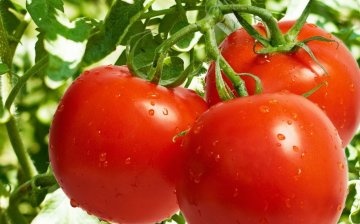
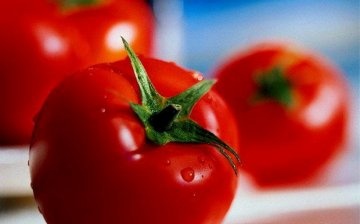
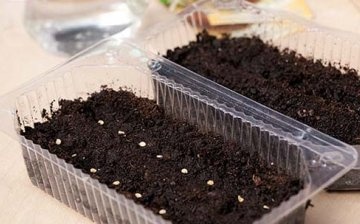
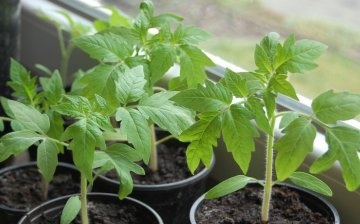
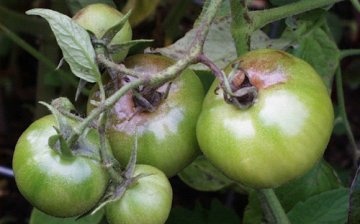






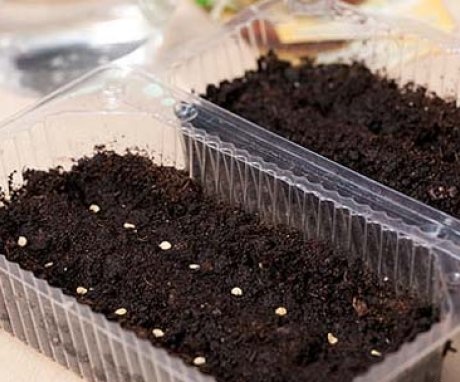
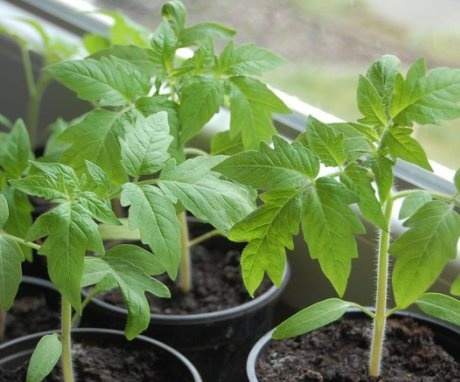
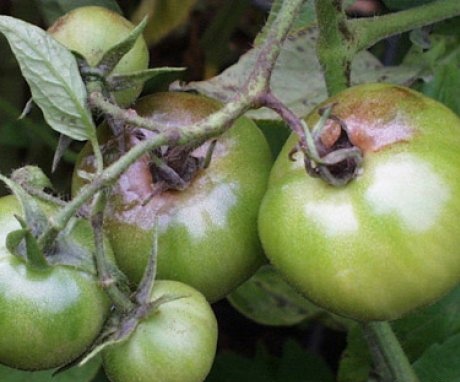
A very good variety Sanka, ripens quickly and has large fruits. True, it is necessary to plant it in open ground not with seeds, but with seedlings and, despite the fact that the variety has low bushes, it is imperative to tie them up, otherwise large fruits will seem to knock the bushes to the ground.